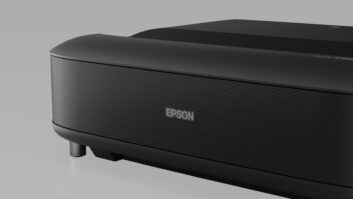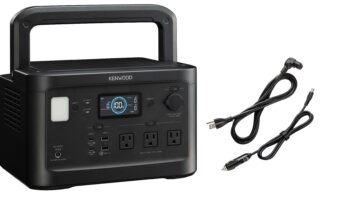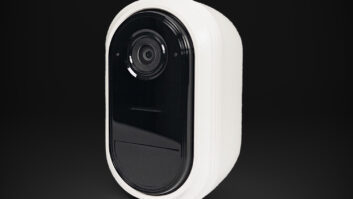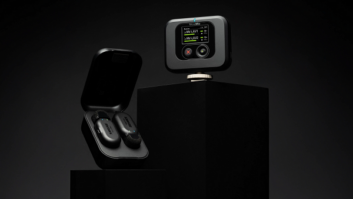NEW YORK — Consumers are ready to purchase Ultra HD TVs, but manufacturers will need to ensure specs are kept simple and easy to understand in order to take full advantage of the upcoming refreshment cycle.
A panel of TV makers and experts convened last week at the TWICE/CEA Ultra HD Conference, held at the Metropolitan Pavilion as part of CES Unveiled New York, where they discussed the challenges of making specs relatable to consumers and debated whether Ultra HD is an evolution or a revolution of TV technology.
Greg Tarr, TWICE executive editor, moderated the panel, which consisted of Tim Alessi, new product development director, LG Electronics USA; Jamie Marsh, senior business manager of Sony Electronics’ home entertainment and sound division; Kevin Miller, president and lead technical expert, ISFTV; Tamaryn Pratt, market analyst principal, Quixel Research; Scott Ramirez, product marketing and development VP, visual products, Toshiba America Information System; and Jim Sanduski, strategic marketing senior VP, Sharp Electronics.
Although most of the participants expressed optimism over the potential of Ultra HD — both Alessi and Sanduski said they were bullish about the market — a lack of Ultra HD content may prove to be a bit of a stumbling block, Marsh said.
Pratt called 2013 “a positioning year,” noting that Quixel is expecting to see about 40,000 units shipped this year. Next year will see 500,000 units shipped, and this is expected to hit 2.5 million units in 2016, she said.
Ramirez was even more optimistic, saying that Toshiba is expecting to see more than 1 million units shipped next fiscal year. “For this year, we didn’t make enough,” he said. “We’re basically sold out.”
Ultra HD will be able to help satisfy the picture-quality need consumers have had since TV first became a product, Alessi said. “When you pair Ultra HD with the trend toward larger screen sizes, it’s a natural alignment that’s really going to drive the demand for it,” he said. “As awareness begins to grow … people will gravitate toward it.”
As with any disruptive technology, consumer education will be a necessary priority for manufacturers and retailers alike. While the increase in number of pixels is easier for consumers to grasp, the importance of black levels and color saturation are more subtle technologies that should be provided without overwhelming the buyer. Ramirez noted that throwing out buzz words could cause consumers to just purchase the cheapest TV because they don’t fully grasp the importance of certain specs.
And while prices for Ultra HD TVs may be at premium levels, they will indeed come down as panel prices fall, further motivating consumers to make the purchase. Sony’s Marsh noted that as prices come down, the content will come.
“The truth is, everybody knows the prices are going to come down to a certain level. The question is, do you have that happen as a cliff effect or do you wind your way down?” said Ramirez. “I think it’s our industry’s way to ratchet down prices. … As we build volume, prices are going to get better for the consumer.”
What Ultra HD has going for it that another disruptive TV technology — 3D — did not, Ramirez added, is that it does not fundamentally alter the way content is viewed. There is no need to wear glasses to experience the full benefits of Ultra HD, something that can’t be said for 3D.
Quixel’s Pratt noted that the TV-replacement cycle is also in play. “Now you can get a new Ultra HD TV as you get a new TV,” she said. “Things are set up for it to be very successful.”
While the hardware waits for the content to catch up, up-scaling technologies are playing a crucial role to keep consumers engaged. Explained ISFTV’s Miller, “Up-scaling is important because we’re going to be looking at 1K and 2K sources for a long time until ultimately it gets replaced with Ultra HD content.” Up-scaling problems can arrive when artifacts in the picture are generated from multiple up-scaling sources.
Ramirez said Toshiba would be announcing a third-generation processing technology next year that addresses this issue.
Another issue that needs addressing by the industry is the promoting of Ultra HD specs. The panel debated the importance of HDMI 2.0, HEVC and the best content for 4K at 60 frames per second (fps). All agreed that sports stand to take the most advantage of 60 fps, and Miller added that gaming stands to benefit as well. The bottom line remains that consumer education will be the best bet for Ultra HD so that consumers don’t just fixate on the price point.
This will become even more of an issue as volume picks up, added Pratt. “If it does just become about price, you can’t articulate all those features in a fast-volume marketplace … It’s a different conversation then.”
Said Marsh, “At the end of the day, it’s about the value for the consumer. Why are they going to buy it? The picture is going to look a lot better. Better resolution, better color, better depth and brightness.”
One conference audience member asked the panel how retailers would ensure consumers can see Ultra HD TVs in brick-and-mortar stores. Ramirez said that out of all the retailers he’d spoken to across the country, there had been possibly just one that wasn’t interested. “Everyone on the retailer side is excited about this category,” he emphasized. “The business has kind of fallen to a price-only discussion in the last couple of years, [and] this is an opportunity to put quality back in. This is not about black level vs. resolution — this is about great picture quality, and people will want the best possible picture quality.
Added Ramirez, to applause, “We’re bringing back the fun and the wow in consumer electronics. That’s why it’s so exciting.”













